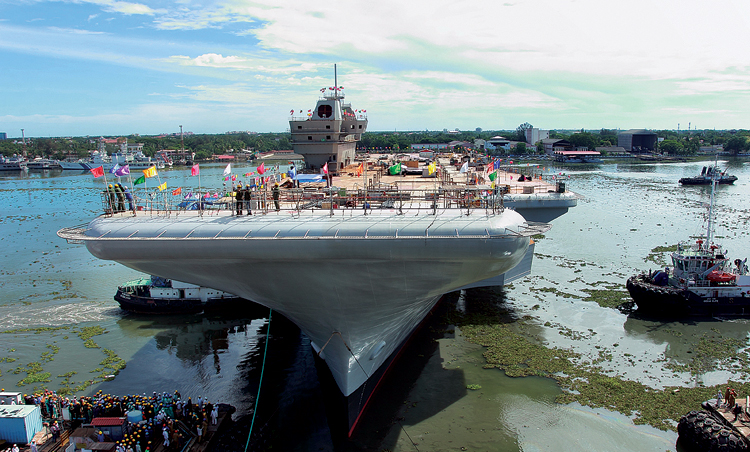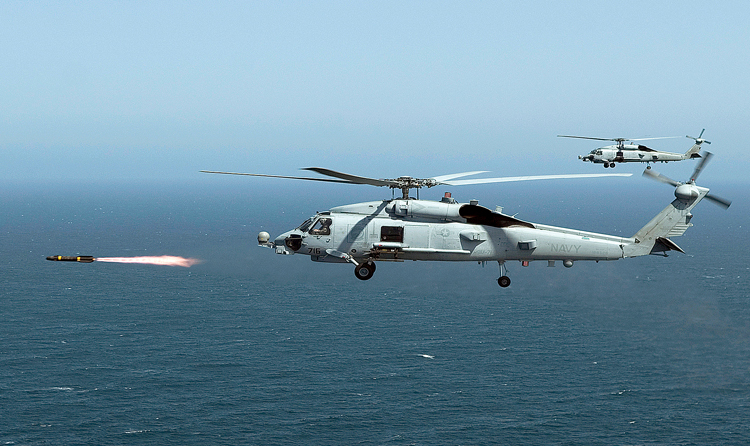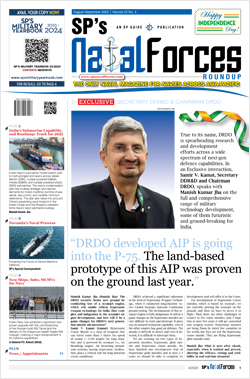INDIAN ARMED FORCES CHIEFS ON OUR RELENTLESS AND FOCUSED PUBLISHING EFFORTS

The insightful articles, inspiring narrations and analytical perspectives presented by the Editorial Team, establish an alluring connect with the reader. My compliments and best wishes to SP Guide Publications.

"Over the past 60 years, the growth of SP Guide Publications has mirrored the rising stature of Indian Navy. Its well-researched and informative magazines on Defence and Aerospace sector have served to shape an educated opinion of our military personnel, policy makers and the public alike. I wish SP's Publication team continued success, fair winds and following seas in all future endeavour!"

Since, its inception in 1964, SP Guide Publications has consistently demonstrated commitment to high-quality journalism in the aerospace and defence sectors, earning a well-deserved reputation as Asia's largest media house in this domain. I wish SP Guide Publications continued success in its pursuit of excellence.
Cover Story
“Strategic Partnership will facilitate the Indian industry in imbibing niche technologies in helicopter manufacturing which would benefit the industry as well as the Indian Armed Forces in the long run”
On the occasion of Navy Day 2018, Jayant Baranwal, Editor-in-Chief of SP’s Naval Forces had an exclusive interview with Admiral Sunil Lanba, the Chief of the Naval Staff. Excerpts:

Jayant Baranwal (JB): While the commissioning and operationalisation of IAC-1 is expected by 2020, there are considerable uncertainties over the launch of Project IAC-2. What is your assessment/perspective on the launch of prestigious IAC-2 programme?
Chief of the Naval Staff (CNS): The IAC-1 is expected to get commissioned by early 2021. The Navy envisages its second Indigenous Aircraft Carrier (IAC-2) to be an electric propelled, 65,000 tonnes CATOBAR carrier. At present, the case is being examined and deliberated with MoD (Ministry of Defence) with reference to the overall financial implications of the Project vis-à-vis Navy’s long-term budget availability. Post accord of Acceptance of Necessity (AoN), a feasibility design study would have to be conducted for which we may seek consultancy from a reputed design house. The exact scope of work and timelines for execution of the project can only be drawn post accord of AoN and completion of feasibility design study of the project.
The IAC-2 would provide critical capabilities to the future naval force, which would be central to our operational philosophy to secure national maritime interest in the future.
IAC-2 is being designed to meet the requirements of Indian Navy in the challenging future strategic environment. Various feasibility options for the carrier are being pursued. The Indian Navy is very optimistic about IAC-2 and we are hopeful that the Government would accord the requisite approvals to get the Project off-the-blocks soon. The IAC-2 would provide critical capabilities to the future naval force, which would be central to our operational philosophy to secure national maritime interest in the future.
JB: Another prestigious programme to bridge the critical operational gaps in the sub-surface fleet of Indian Navy is P-75(I). Despite Government’s approval for P-75(I) to be steered within the ambit of Strategic Partnership (SP) Model there are no visible signs of its launch. What is the present status P-75(I)?
CNS: P-75(I) is indeed being progressed under the Strategic Partnership (SP) Model as promulgated by the Government of India in Defence Procurement Procedure 2016. To ensure uniform guidelines for progressing all four segments of the SP Model, the Defence Acquisition Council approved Generic guidelines in July 2018. Promulgation of Segment specific guidelines by Government of India/Ministry of Defence for the Submarine segment is expected shortly. The Expression of Interest documents for short listing of Strategic Partners and Foreign OEMs for P-75(I) are likely to be issued by end-2018 followed by likely issue of RFP by mid-2019.
JB: The Defence Acquisition Council on August 25, 2018, has approved procurement of 111-armed Naval Utility Helicopters (NUH) for Indian Navy at a cost of over 21,000 crore, as also the approval to procure 24 Naval Multi-Role Helicopters (NMRH) with anti-submarine warfare and anti-surface warfare capabilities. In your assessment what will be the timelines for launch and execution of NUH programme? Likewise, what is the status of 123 NMRH programme?
CNS: These two projects, the NUH and NMRH, are being pursued under the ‘SP’ model. The response to RFIs for both projects has been very encouraging. Several OEMs have shown interest towards manufacturing these helicopters in India. The NUH is the basic ship borne utility helicopter with relatively lesser complexities, which are likely to be inducted in a phased manner commencing 2024. The NMRH is a complex platform with sophisticated weapons and sensors. Therefore, the induction of NMRH may take one or two years more than the NUH. The most significant aspect of the Strategic Partnership is that it will facilitate the Indian industry in imbibing niche technologies in helicopter manufacturing which would benefit the industry as well as the Indian Armed Forces in the long run.

JB: Kindly elucidate the status on procurement of 57 Multi-Role Carrier Borne Fighters programme for Navy?
CNS: The RFI of the MRCBF was hosted in January 2017. Responses from the vendors have been comprehensive and are presently under examination. The aircraft selected would be such that changes required to the existing aircraft carriers to operate the aircraft, if any, would be minimal. The RFP is likely to be issued in 2019.
JB: After prolonged delays, more than a year ago ‘Approval in Principal’ for acquisition of four LPD/LHD was accorded by the Government for construction by Indian Private Sector shipyard in collaboration with a foreign OEM. What is the status of the project?
CNS: The induction of four LPDs is part of the Indian Navy’s Maritime Capability Perspective Plan. Post accord of approval by the DAC, for construction of all four ships by private shipyards cleared by the Technical Evaluation Committee, the case has been taken over by the Contract Negotiating Committee which is presently awaiting certain procedural clearances to progress the case further.





